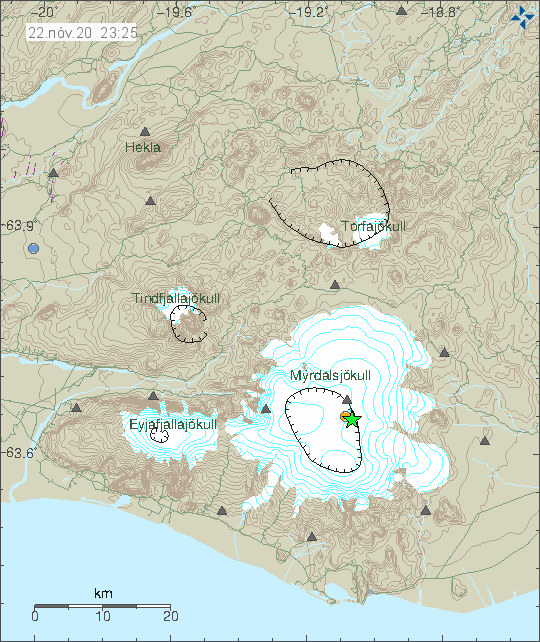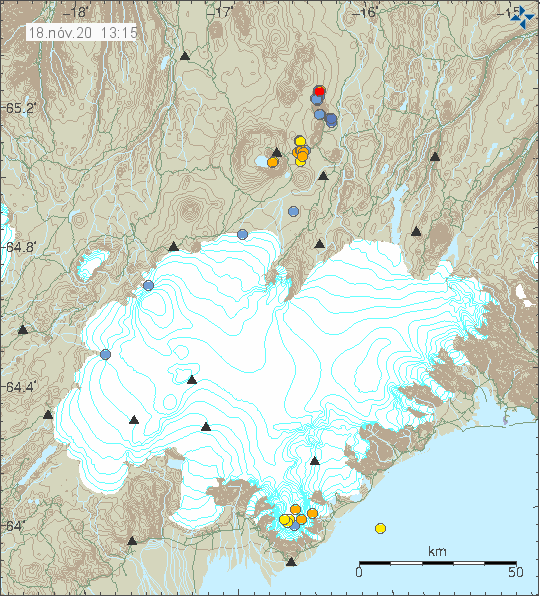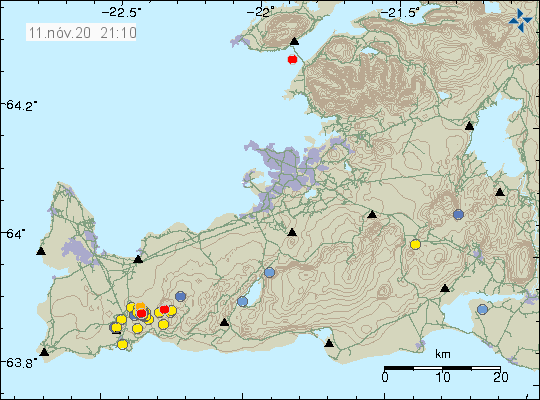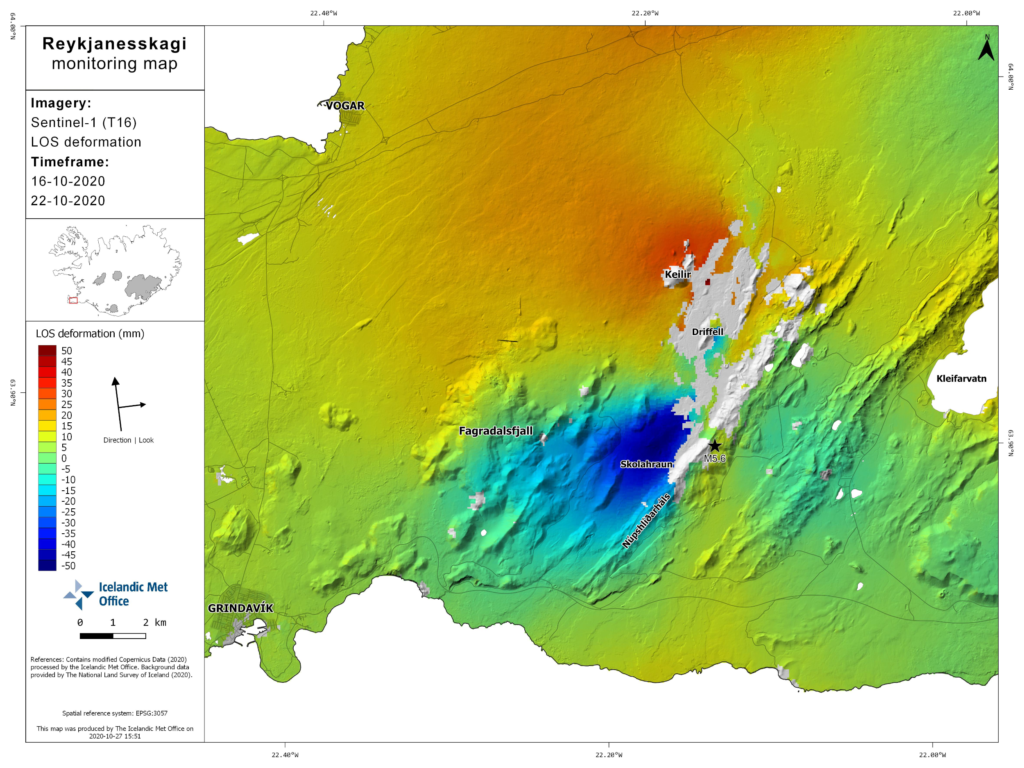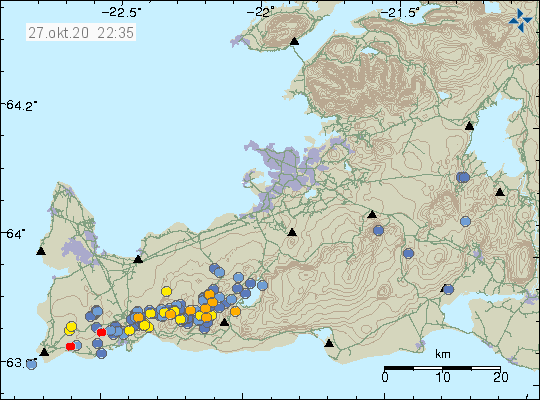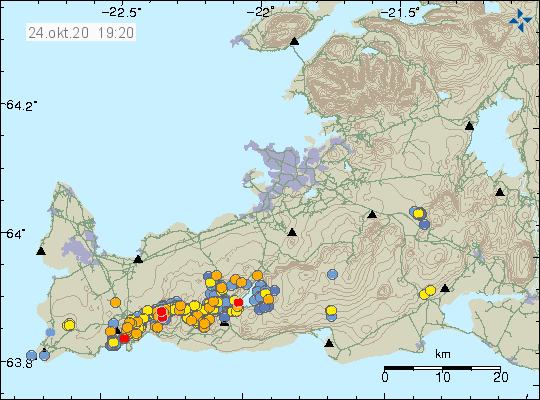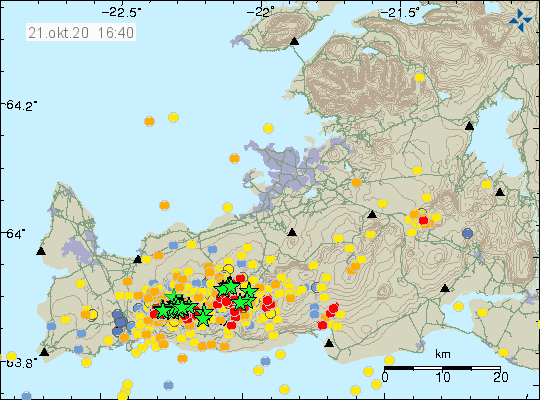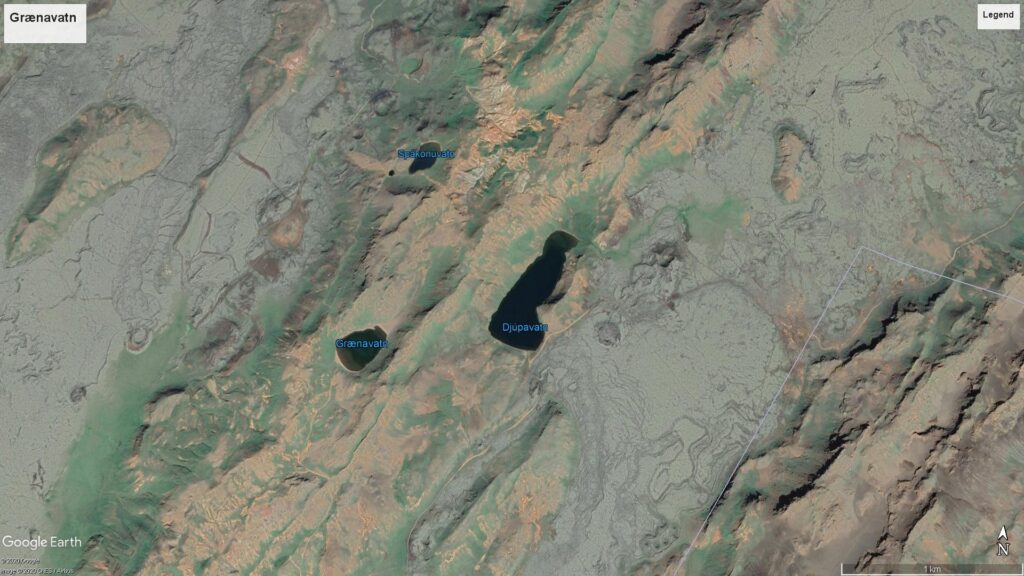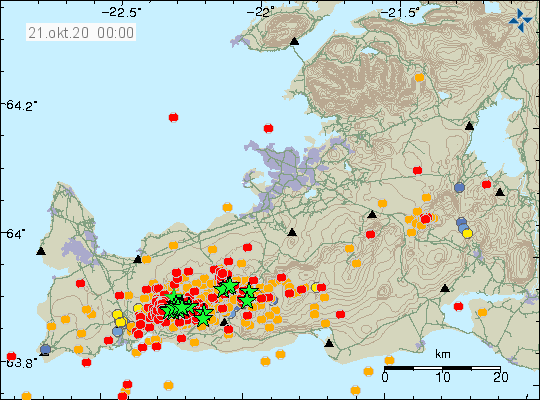This is the last update for today (20-October-2020) on this earthquake unless something major happens.
This earthquake magnitude has been confirmed at Mw5,6 mostly. It might change in next few weeks as the data is better reviewed. More then 400 earthquakes have been felt after the large earthquake and at the writing of this article largest aftershock has automatic magnitude of Mw4,1.
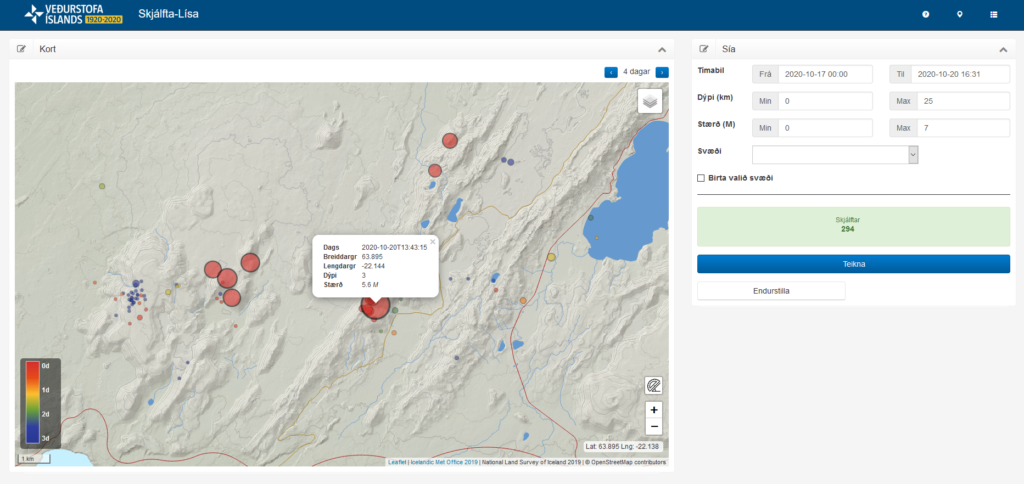
Location of the largest earthquake. Copyright of this image belongs to Icelandic Met Office.
Currently the main earthquake activity is moving west or south-west and that might trigger more large earthquakes in next 24 – 48 hours. Minor damage has been reported following the largest earthquake. Items falling off shelves and in stores and homes, cracks forming in walls, floors and outside in few areas. Rock slides have also been reported and closed one road on Reykjanes peninsula close to Grindavík.
News reports with pictures and videos if the main earthquakes and the damage it created
Stór sprunga í gólfi flugskóla Keilis (mbl.is, picture)
Skjálftinn í myndum (frettabladid.is, pictures, videos)
Added: Vörur köstuðust til og maður í górillubúningi hljóp um (Rúv.is, Video, Icelandic)
Earthquake activity on Reykjanes peninsula
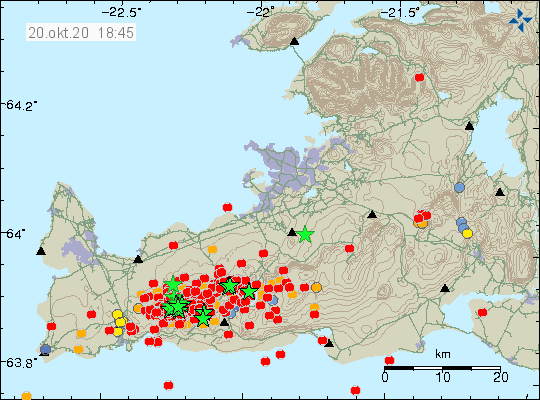
The earthquake activity at 18:45 UTC on Reykjanes peninsula. Copyright of this image belongs to Icelandic Met Office.
There have not been any clear sign or any sign of magma movement in this earthquake activity at the writing of this article. It is unclear of that is going to change since the magma that has been flowing into the crust in Reykjanes volcano simply might not be pressured enough to erupt for a while longer.
Donations
Please remember to support my work with donations. I’ve been broke in October and everything helps. Thanks for the support. 🙂
Article updated at 20:06 UTC.
